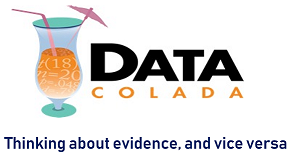About a year ago I wrote Colada[95], a post on the threat R poses to reproducible research. The core issue is the 'packages'. When using R, you can run library(some_package) and R can all of a sudden scrape a website, cluster standard errors, maybe even help you levitate. The problem is that packages get updated…
[99] Hyping Fisher: The Most Cited 2019 QJE Paper Relied on an Outdated Stata Default to Conclude Regression p-values Are Inadequate
The paper titled "Channeling Fisher: Randomization Tests and the Statistical Insignificance of Seemingly Significant Experimental Results" (.htm) is currently the most cited 2019 article in the Quarterly Journal of Economics (372 Google cites). It delivers bad news to economists running experiments: their p-values are wrong. To get correct p-values, the article explains, they need to…
[98] Evidence of Fraud in an Influential Field Experiment About Dishonesty
This post is co-authored with a team of researchers who have chosen to remain anonymous. They uncovered most of the evidence reported in this post. These researchers are not connected in any way to the papers described herein. *** In 2012, Shu, Mazar, Gino, Ariely, and Bazerman published a three-study paper in PNAS (.htm) reporting…
[97] Data Replicada #10: Does Goal Conflict Affect Time Spent on Work and Leisure?
In the tenth installment of Data Replicada, we report our attempt to replicate a recently published Journal of Consumer Research (JMR) article entitled, “Goal Conflict Encourages Work and Discourages Leisure” (.htm). The article’s two key hypotheses are right there in the title: People who are faced with a goal conflict are (1) more likely to…
[96] Madam Speaker: Are Female Presenters Treated Worse in Econ Seminars?
A recent NBER paper titled "Gender and the Dynamics of Economics Seminars" (.htm) reports analyses of audience questions asked during 462 economics seminars, concluding that “women are asked more questions . . . and the questions asked of women are more likely to be patronizing or hostile . . . suggest[ing] yet another potential explanation…
[95] Groundhog: Addressing The Threat That R Poses To Reproducible Research
R, the free and open source program for statistical computing, poses a substantial threat to the reproducibility of published research. This post explains the problem and introduces a solution. The Problem: Packages R itself has some reproducibility problems (see example in this footnote [1]), but the big problem is its packages: the addon scripts that…
[94] Data Replicada #9: Are Progression Ads More Credible?
In the ninth installment of Data Replicada, we report our attempt to replicate a recently published Journal of Marketing Research (JMR) article entitled, “Advertising a Desired Change: When Process Simulation Fosters (vs. Hinders) Credibility and Persuasion” (.htm). Some products, such as weight loss programs, exist to help consumers attain a desired change. In this paper,…
[93] ResearchBox: Open Research Made Easy
This post introduces ResearchBox, a new platform for easily sharing data, code, materials, and pre-registrations. With a design and approach similar to AsPredicted, ResearchBox simplifies, standardizes, and organizes supporting materials for publishable research. Compared to the current leading platform, the OSF, ResearchBox is narrowly designed to make it easy for authors to share data, code,…
[92] Data Replicada #8: Is The Left-Digit Bias Stronger When Prices Are Presented Side-By-Side?
In the eighth installment of Data Replicada, we report our attempt to replicate a recently published Journal of Marketing Research (JMR) article entitled, “The Left-Digit Bias: When and Why Are Consumers Penny Wise and Pound Foolish?” (.htm). In this paper, the authors offer insight into a previously documented observation known as the left-digit bias, whereby…
[91] p-hacking fast and slow: Evaluating a forthcoming AER paper deeming some econ literatures less trustworthy
The authors of a forthcoming AER article (.pdf), "Methods Matter: P-Hacking and Publication Bias in Causal Analysis in Economics", painstakingly harvested thousands of test results from 25 economics journals to answer an interesting question: Are studies that use some research designs more trustworthy than others? In this post I will explain why I think their…
